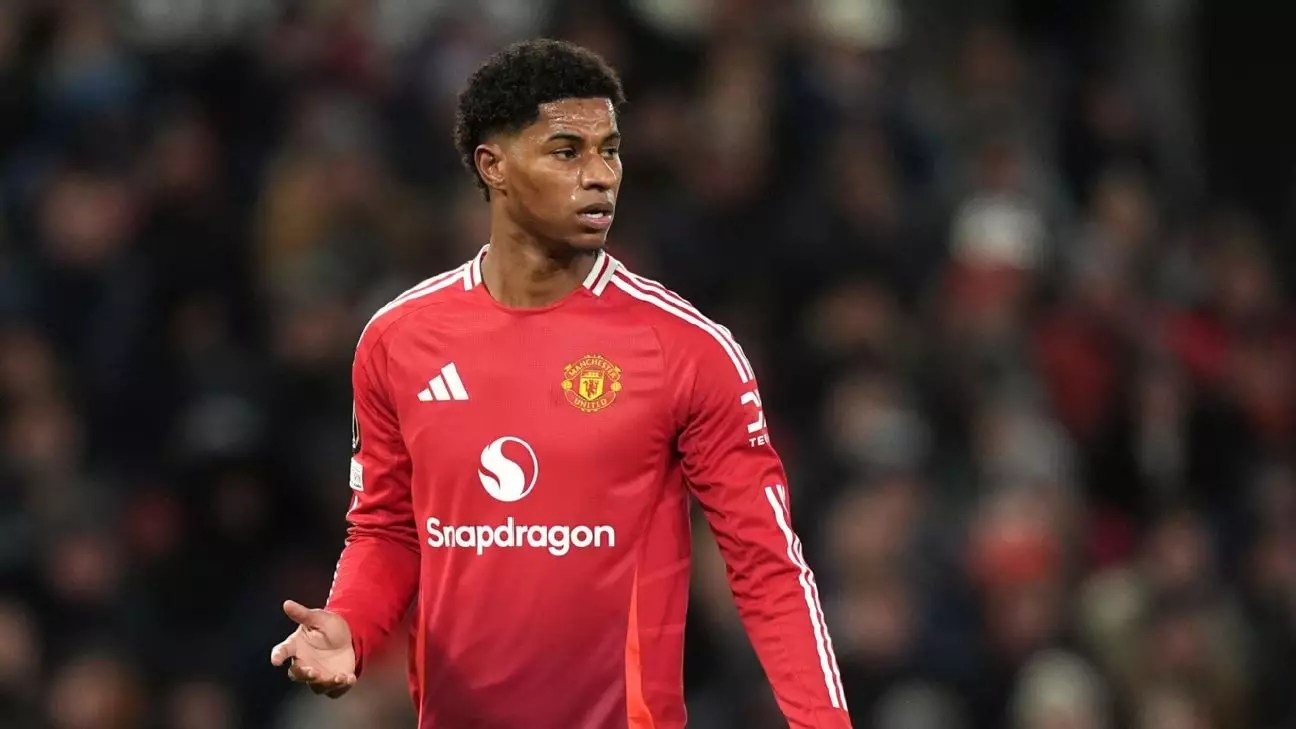In the ever-evolving landscape of European football, transfer windows serve as a battleground where clubs deploy strategic maneuvers to fortify their squads, chase glory, and capitalize on financial opportunities. The current period demonstrates a fascinating blend of calculated negotiations, high-stakes bidding wars, and ambitious ambitions that could reshape team lineups significantly. Clubs are not just acquiring players; they are crafting futures, betting on potentials, and sometimes risking financial stability for glory. The transfer activity reflects a broader narrative of competitiveness, financial muscle, and strategic foresight.
Manchester United’s potential sale of Marcus Rashford to Barcelona exemplifies this. Rashford, a towering figure in United’s attack, might soon don the famous Catalan blaugrana, a move driven by both strategic planning and financial considerations. Barca reportedly prefers a loan arrangement with an option to buy, a pragmatic approach that reduces risks for both parties. For United, demanding a €48m fee aligns with their valuation, yet the chance to loan him while he still has two years on his contract provides flexibility. This signifies a broader trend: elite clubs are now more willing to negotiate complex deals that balance immediate financial gains with long-term strategic benefits.
Meanwhile, Liverpool’s aggressive stance in the transfer market surfaces through their plan to submit a £40 million bid for Marc Guéhi, the talented center-back from Crystal Palace. Liverpool’s “take-it-or-leave-it” posture underscores their seriousness and valuation of the 25-year-old defender. With other giants like Arsenal, Chelsea, and Manchester United also eyeing Guéhi, Liverpool aims to secure a high-caliber addition to their defensive ranks. This move reflects a broader shift in the Premier League, where top clubs are prepared to outbid rivals to secure promising talent before they inevitably escalate in value.
The activity surrounding European and global clubs highlights an increased focus on young, high-potential strikers like Hugo Ekitike, Benjamin Sesko, and Ollie Watkins. Their valuations—often well above €100 million—mirror the premium placed on attacking prowess in modern football. Frankfurt’s desire to retain Ekitike while simultaneously contemplating offers demonstrates this delicate balancing act that clubs face: nurturing young talent vs. cashing in at peak market value. The interest from clubs like Liverpool, Newcastle, and United reveals a fiercely competitive market for emerging stars, a reflection of the high stakes involved in squad-building.
Financial Powerhouses and Market Realities
The disparity between market valuations and club budgets often informs the pace and nature of negotiations. For instance, Benjamin Sesko’s asking price of over €90 million makes him a tough target for many European clubs. The Saudi Pro League’s interest through Al Hilal underscores a new financial dimension in global football, where Middle Eastern clubs are increasingly willing to splash huge sums to attract star players. This shift introduces a new layer of complexity, as traditional European clubs must now navigate an environment where wealth can override sporting merit to some extent.
Similarly, other clubs like Inter Milan are contemplating strategic mid-season signings, such as Granit Xhaka, contingent upon squad departures. These conditional moves exemplify tactical planning—matching incoming talent with outgoing players to optimize squad harmony and financial sustainability. The transfer market becomes less about impulsive spending and more about calculated moves designed to maximize potential and minimize risk.
Furthermore, the interest in players like Rodrygo, Jadon Sancho, and Rodrigo De Paul highlights the ongoing tug-of-war between clubs to secure established stars or rising prospects. For example, Manchester United’s engagement with Brentford’s Bryan Mbeumo indicates a commitment to reinforcing their attack, while Sancho’s impending move to Juventus signals a priority shift in player recruitment.
Lastly, clubs outside of Europe’s traditional powerhouses are showing increasing ambition. Inter Miami’s confident pursuit of Rodrigo De Paul and Al Hilal’s probing for strikers like Sesko and Watkins reveal a broader, more competitive global market, where wealth and strategic Vision dominate, pushing the traditional transfer landscape into uncharted territories.
Implications for the Future: An Unpredictable but Exciting Era
These transfer activities tell a story of a game that is more dynamic and unpredictable than ever. Clubs with deep pockets, like Barcelona, Manchester United, and Al Hilal, are not merely reactive but proactive, shaping their squads based on long-term visions. The fluidity of negotiations—loan deals with options, conditional buyouts, and hefty valuations—indicates a shift towards flexible, creative deal-making, challenging traditional transfer paradigms.
While some players like Rashford and Guéhi are on the cusp of major moves, the impact of these transfers extends well beyond individual careers. They influence team dynamics, fan expectations, and the competitive balance in leagues across Europe and beyond. As clubs continue to adapt to new financial realities and strategic priorities, spectators can expect an era marked by bold moves, record-breaking bids, and unexpected twists that will keep football fans glued to their screens.
Perhaps most compelling is the emergence of new financial giants and competitive power nodes, elevating the stakes of every transfer decision. This evolving landscape promises a future where talent, money, and strategy collide in a spectacular spectacle of football transformation—not just for today, but for years to come.


Leave a Reply